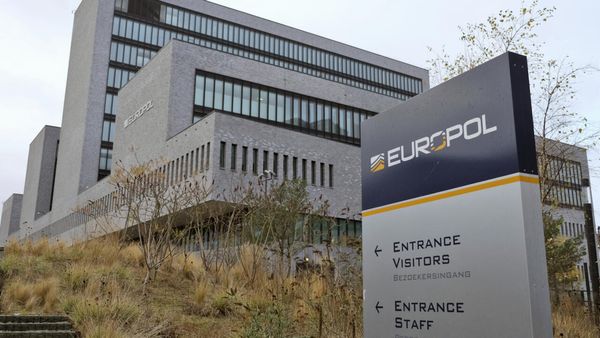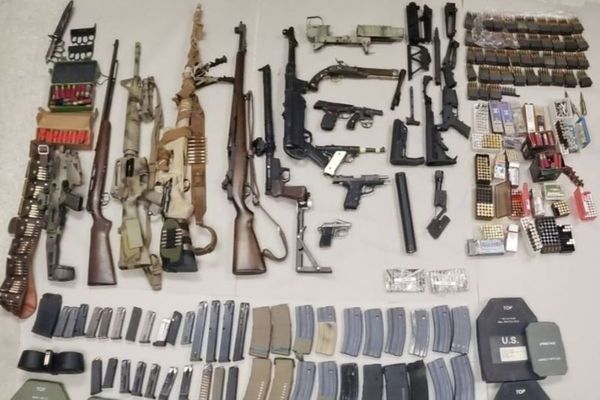The Northland shopping centre in Melbourne’s north faced three shocking incidents over the span of four weeks, sounding alarms for both shoppers and staff of centres across Melbourne. Included in the three incidents was a gang confrontation where a minor used a machete to attack another minor within the centre's food court.
Police have said up to 10 people were involved in the shopping centre’s machete attack that terrified shoppers and witnesses and left one person seriously injured on May 25th. Police, experts, staff and workers in the retail centre and shoppers and witnesses across social media have raised serious concerns over security failures and a lack of measures that enabled both a public gang confrontation that involved a machete attack and a 4WD to plough through the building.
The Allen government responded promptly with broader crime reforms, but the public is calling for an increased security presence, including better bollard protection and implementing tactical guarding in Melbourne shopping centres. Given two criminal incidents in one month were able to occur in the same shopping centre, these requests seem more than justified.
What unfolded at Northland shopping centre
Arguably, the most alarming incident happened on May 25th, when police responded to a triple‑zero call reporting a violent altercation. Within six minutes, officers arrived to find two minors (aged 15 and 16), wearing balaclavas and swinging machetes, engaged in a horrific fight. Witnesses recalled loud screams, shoppers sheltering in stores and a staff announcement ordering evacuation. Some witnesses later shared videos of machete-wielding individuals chasing victims, while others bolted in panic.
A few weeks later, a 27-year-old man from East Melbourne drove a stolen Land Cruiser through Northland shopping centre. While no-one was injured in this incident, staff and shoppers fled the area in terror, and an evacuation was called. The next day, the centre had to be evacuated again due to smoke from an electrical light, with shoppers told to leave immediately. While the third incident was an accident, tensions were obviously high among workers and visitors given the recent crime history and caused panic among staff and centre visitors.
Security challenges and shortcomings
Northland’s existing security measures faltered during the machete attack. CCTV footage exists, yet it took over 30 minutes for the centre’s alarm to sound amid the chaos. Staff guided customers behind counters or into storerooms, but many witnessed structural failures in emergency protocols and communication systems.
In the wake of that, Vicinity Centres, the management behind Northland, says they’re committed to reviewing and strengthening safety procedures, including patrols and better training in crisis response.
What needs to come next
So, what measures can they take to provide sufficient safety and security? Currently, CCTV and security guards are a failing system that relies on external forces to adequately resolve on-site threats, and they often come with delays. Some CCTV cameras are known to give centre security a false sense of confidence. Here’s what is actually needed now:
Tactical guarding
As incidents like the Northland machete attack spark wider conversations about security shortfalls in public venues, many centres are reassessing what a modern safety presence should actually look like. One approach under the spotlight is tactical guarding – a more visible, better-trained and tech-enabled model of frontline security that goes beyond traditional passive patrols. These guards are trained in managing conflict, responding to aggression and working proactively in high-traffic, high-risk environments like retail precincts. In times of high threat, this is a much better approach than security guards hired solely to monitor and intimidate shoplifters.
Tactical guards are equipped with body-worn cameras, slash-resistant vests and real-time communications linked to a central operations centre. Just as importantly, their training focuses on de-escalation and tailored sector protocols, meaning they’re prepared to act decisively in dynamic situations without escalating them further. For centres facing rising incidents of violence, tactical guarding presents a way to restore public confidence while keeping frontline teams safer and more prepared.
Enhanced crime prevention building design
Crime Prevention Through Environmental Design (CPTED) is a system public spaces adopt in the designs of their spaces to reduce crime. It involves considering design elements that promote better lighting, visibility and layout to deter loitering or group violence. Northland and other major shopping centres can revisit the CPTED for additional measures that will make the building safer and more challenging to commit crimes within.
In the second incident over three weeks at Northland, the Land Cruiser drove straight through the bollards that are meant to prevent vehicles entering the centre. Stronger bollards are another key security measure gaining renewed attention in the wake of violent public incidents as part of CPTED. Strategically placed at entry points, they help prevent unauthorised vehicle access and can act as physical barriers to slow or block fleeing offenders on foot. In busy retail environments, high-impact bollards also offer a non-intrusive way to protect shopfronts and pedestrian areas without disrupting the shopping experience.
Government response: urgency meets legislation
Since the attack, Victorian Premier Jacinta Allan has acted. Although a machete prohibition was already slated for September 1 (with exemptions and an amnesty window) following broader crime reforms in March, the Northland clash prompted her to announce an instant, interim ban on machete sales effective May 28. Commercial platforms like Amazon Australia complied, pulling machetes from their listings nationwide.
This ban, Victoria’s first, prohibits sales and possession of knives over 20 cm, penalising non-compliance severely. It remains in force until full legislation activates on September 1, with a three-month surrender amnesty through November 30. Allan defended the rapid response as necessary to protect public safety and stated that the courts must act to keep dangerous individuals off the streets.
Shockingly, most suspects, three of four minors, were already out on bail for serious offences at the time of the attack. Police confirmed it was a pre-arranged retaliatory gang meetup, not a random outburst. These were young offenders, many with known gang affiliations, highlighting systemic gaps in bail supervision and youth rehabilitation.
This has called for stronger bail and court reforms, in particular, for the Allan government’s bail overhaul to be extended with tighter assessments, frequent reviews and enforced compliance for at-risk youths.
Moving forward better prepared
The Northland machete attack was a near‑catastrophe – a violent, premeditated attack that exposed failures across bail systems and commercial security standards. While swift legislative action on machete bans is encouraging, it’s only a first step.
True resilience demands better investment in people and systems: engaging tactical guards when necessary and better crime prevention building and security design. Unless these efforts are sustained and implemented in centres across Melbourne and the rest of the country, shocking flashpoints like Jun’s machete attack risk becoming normalised, turning our shopping centres from community hubs into places where we all need to be scared and vigilant.







